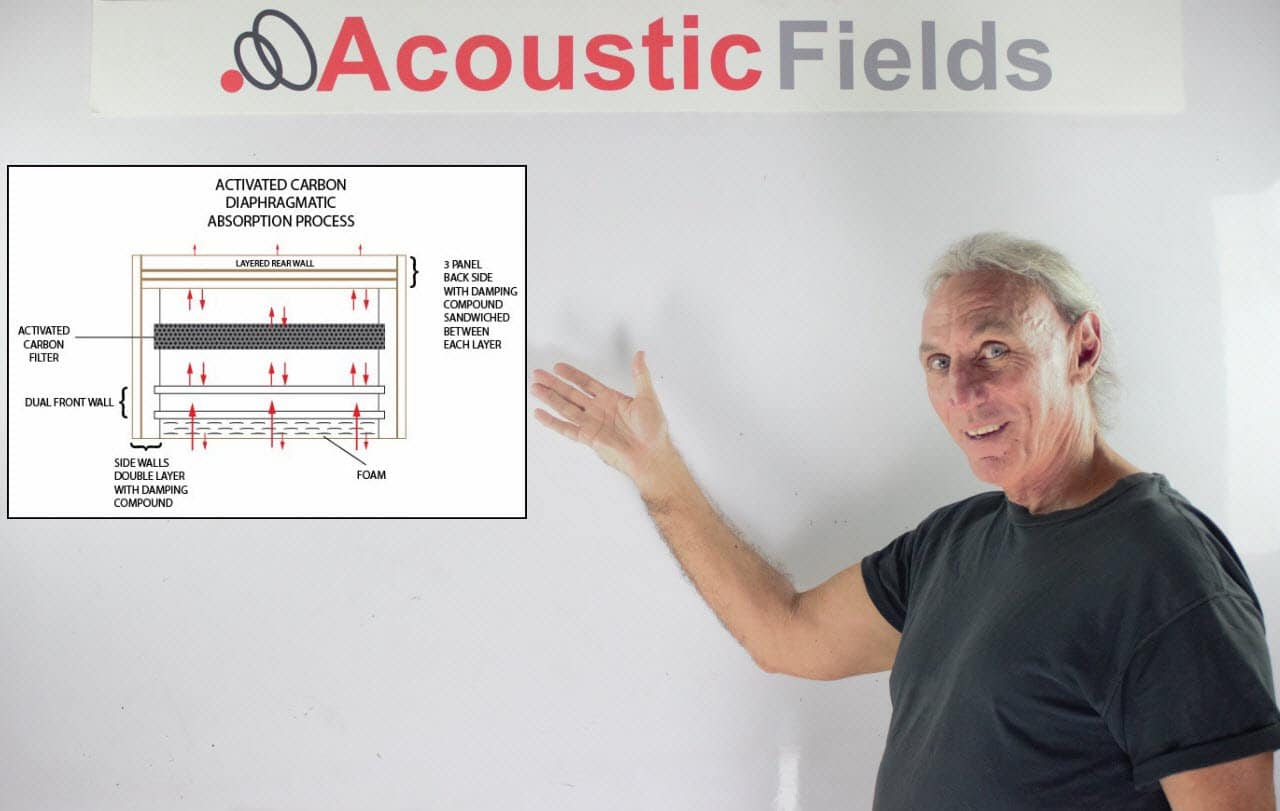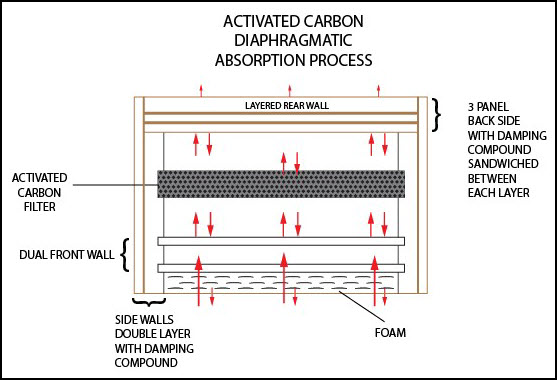Today we’re going to talk about membrane versus diaphragmatic absorption. Both are low frequency absorption techniques and there’s a lot of confusion out there about those so I decided to kind of do an A, B comparison and I hope after this explanation you have a little bit better idea of the terms.
A membrane absorber is for lower frequencies. It’s a cabinet with a faceplate or a face membrane so the cabinet is lighter weight, the membrane is lighter weight. It’s flexible. It moves in reaction to sound pressure. It has a resonant frequency or a frequency at which it works and frequencies above that resonant frequency are absorbed, frequencies below it are not. So you calculate that particular resonant frequency based on how deep you build it.
The rate or the amount of absorption and how fast it absorbs energy is also a factor of the internal fill material that you use. So a membrane absorber is very similar to a diaphragmatic absorber except it’s not as performance-oriented. It’s more lightweight. It doesn’t have the higher rates and levels that the diaphragmatic absorption has and we’re going to talk about diaphragmatic absorption now and you’ll see why.
So a diaphragmatic absorber has a face wall but is more dense, it’s a heavier mass, it’s not a membrane. So there’s a difference between the two right away. We have a different face frame, different face plate. Cabinets lightweight in membrane, its very heavy and a higher density in diaphragmatic absorption because in diaphragmatic absorption our goal is no cabinet movement, maximum face movement. So we want our face wall to move.
In our product we use two face walls that move in sympathy with each other so that I’ll even give you an idea of the density of our technology. The resonant frequency in a membrane absorbers calculated on the depth of the absorber. Same thing with the diaphragmatic absorber so the depth determines the resonant frequency. The big difference is the internal fill material because that gives you the rate, how much you’re absorbing it, what frequencies above the resonant frequency.
Diaphragmatic absorbers are much heavier products
So with a diaphragmatic absorber you have a much heavier product, much higher rates and levels of absorption. So just to give you an idea most membrane absorbers on the market that work in the 60 cycle range are twenty and thirty pounds a piece. Our diaphragmatic absorbers that work in that range or with other ranges are over 200 pounds each. It gives you an idea of the difference between the two. Diaphragmatic will give you much more absorption in the same amount of space, the tradeoff is more mass.
So, in summary you can see how a diaphragmatic absorbers built in the following graphic. A series of layers in the cabinet, internal fill materials, dual wall a scientific creation to maximize low frequency absorption. And we always have to remember in our rooms that quality sound is about doing a lot of things in the right order.
So match what you’re using. If you can use a lighter weight low frequency absorption technology because you have a larger room, you should do that. Most rooms need a diaphragmatic absorber in the low end because they’re so small the pressure levels are so high. So we always have to remember where we’re using it and how.
In Summary
To learn more about room acoustics please sign up to download our free ebooks and video series on room acoustics here. And please let me know if you have any questions at any time.
Thanks
Dennis Foley









The discussion on ductwork noise transmission from Acoustic Fields highlights crucial aspects of HVAC system acoustics. The movement of air…
Great build plans. thank you Denis
You must use absorption. Never place a chair against a wall.
A friend and I built several diffusors using these plans and they turned out absolutely beautiful. Very good instructions and…